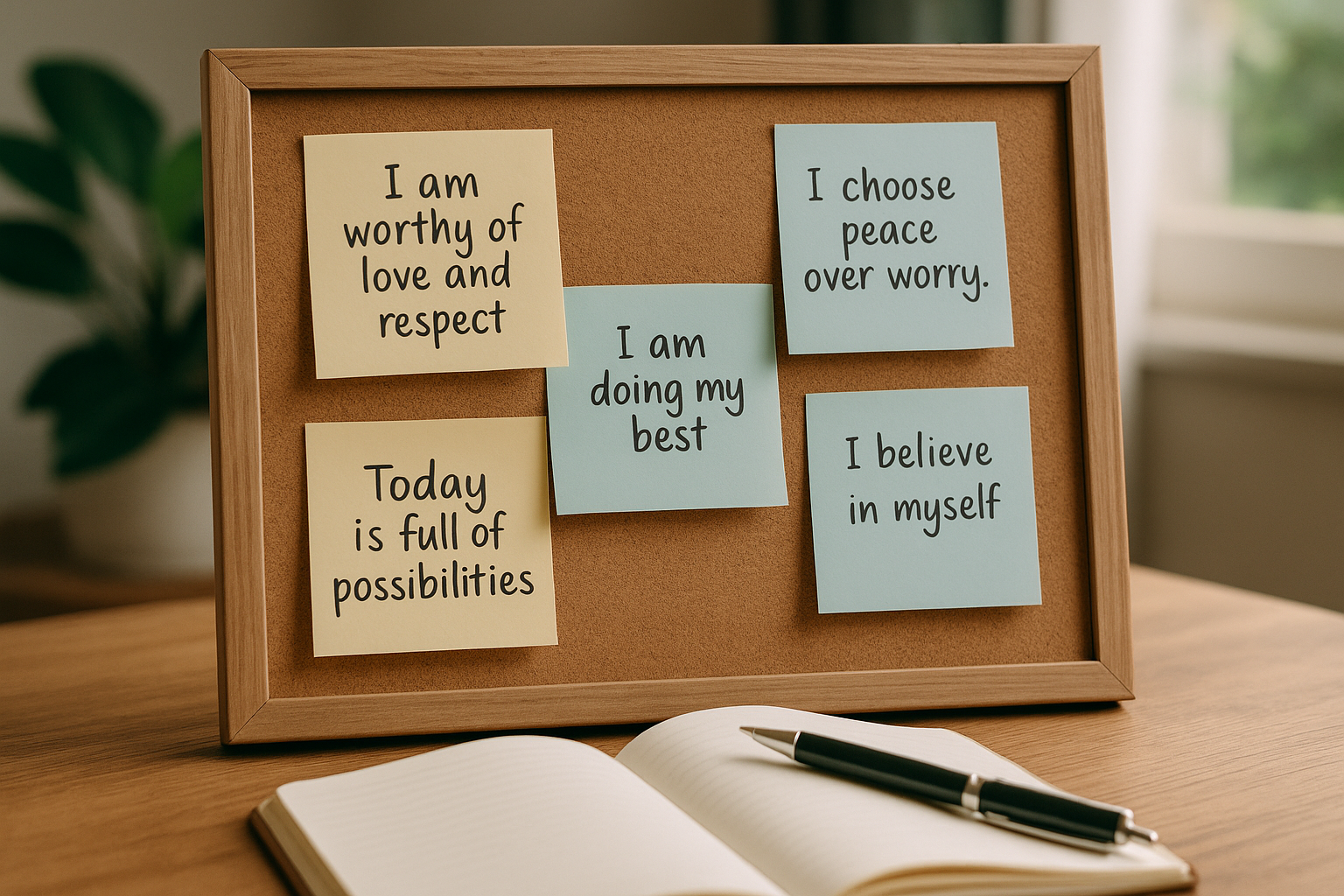Positive affirmations are more than feel-good mantras—they’re intentional thoughts that can help rewire your brain for self-belief, motivation, and calm. When used consistently, affirmations can become powerful tools for mental clarity and emotional strength.
In this article, we’ll break down what affirmations are, why they work, and how to use them effectively in your daily life.
What Are Positive Affirmations?
Positive affirmations are short, empowering statements designed to challenge and control negative thoughts or self-sabotaging beliefs. They’re based on the principle that repeating constructive phrases can influence the way we think and feel over time.
Examples include:
- “I am enough.”
- “I can handle whatever comes my way.”
- “I choose peace over worry.”
- “I am worthy of love and respect.”
- “Today is full of possibilities.”
The goal isn’t to lie to yourself, but to gradually shift your mindset toward positivity and resilience.
Why Do Affirmations Work?
Your brain responds to repetition. The more often you hear something—especially from yourself—the more likely you are to believe it. Affirmations help by:
- Reprogramming thought patterns
- Building confidence and motivation
- Reducing the influence of negative self-talk
- Creating emotional stability in stressful moments
Studies in neuroscience show that affirmations activate areas in the brain associated with self-processing and reward, especially when they align with personal values.
How to Create Effective Affirmations
Not all affirmations are created equal. For them to be effective, they need to feel believable and aligned with your goals.
Here’s a simple guide to writing your own:
1. Use the Present Tense
Affirmations work best when stated as if they’re already true.
✅ “I am confident speaking in public.”
❌ “I will be confident one day.”
2. Keep It Positive
Avoid words like “not” or “don’t.” Focus on what you do want.
✅ “I choose to trust myself.”
❌ “I am not afraid.”
3. Make It Personal
Speak to yourself, about yourself.
✅ “I am proud of my progress.”
❌ “People should be proud of me.”
4. Focus on Emotion
Use words that evoke how you want to feel: strong, calm, joyful, loved, safe, etc.
✅ “I am calm and grounded.”
✅ “I welcome abundance into my life.”
When and How to Use Affirmations Daily
1. Morning Ritual
Start your day with 5 minutes of affirmations. Say them out loud in front of a mirror to reinforce belief.
Example: “I am energized and ready for the day.”
2. During Stressful Moments
Use calming affirmations during work pressure, arguments, or anxiety.
Example: “I breathe in peace and exhale tension.”
3. Before Sleep
End the day with affirmations that encourage rest and gratitude.
Example: “I did my best today, and I am at peace.”
4. While Journaling
Write your affirmations along with your goals or reflections. It helps solidify them in your subconscious mind.
5. Set as Reminders
Use phone notifications, sticky notes, or wallpapers with affirmations to remind yourself throughout the day.
Examples of Affirmations by Goal
For Confidence
- I believe in myself and my abilities.
- I am proud of who I am becoming.
- I am capable of great things.
For Calm and Clarity
- I let go of what I cannot control.
- I am centered, calm, and in control.
- My mind is clear and focused.
For Success and Motivation
- I am focused and productive today.
- I attract opportunities for growth.
- I take bold steps toward my goals.
For Self-Love
- I am enough, just as I am.
- I deserve kindness, including from myself.
- My worth is not tied to external validation.
Common Mistakes to Avoid
- Overloading your list: Start with 3–5 affirmations you connect with.
- Saying them passively: Feel the emotion behind the words.
- Expecting instant change: Like any habit, affirmations take consistency.
Final Thought: Let Your Words Shape Your World
Affirmations are not magic—but your thoughts are powerful. When repeated with intention and belief, they shape your actions, emotions, and worldview.
Choose words that support the life you want to create. Speak them. Write them. Believe in them. And soon, you’ll begin to notice that you’re not just saying affirmations—you’re living them.

